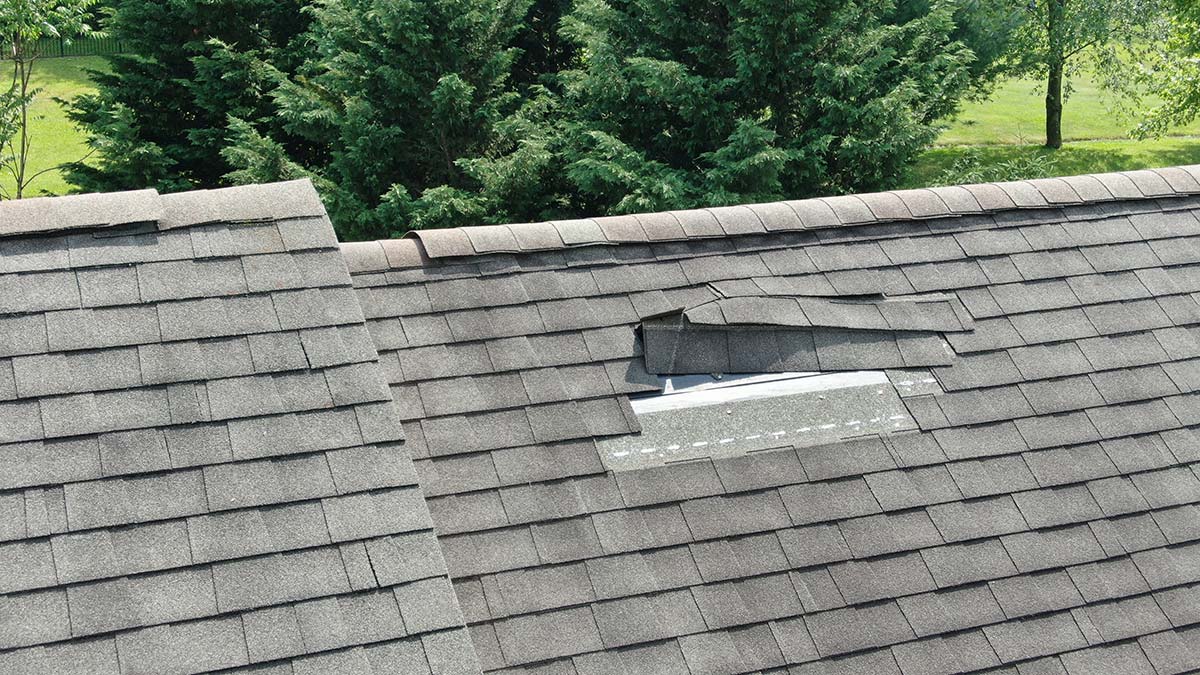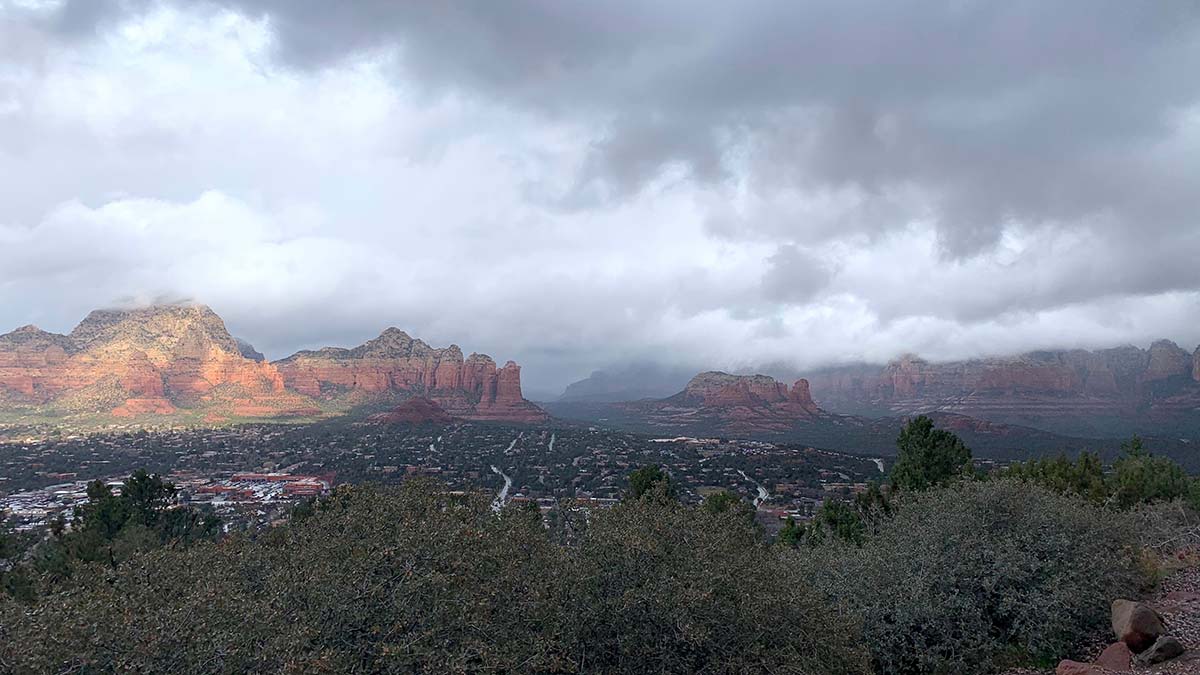Every year, Arizona’s monsoon season brings a powerful mix of rain, wind, dust storms, and sudden flooding—and Cottonwood homeowners need to be ready. If you’re wondering how to prepare your home for the upcoming monsoon storms, now is the time to act.
From clogged gutters and downspouts to unnoticed roof leaks, small issues can quickly become major problems when heavy monsoon rains roll in. In this guide, we’ll walk you through everything you need to know to protect your property during the stormy season, including key tips on roof inspection, drainage, securing outdoor furniture, and more.
As Arizona’s monsoon season officially begins on June 15th and runs through September 30, taking a few preventative steps now can help you stay safe and avoid costly roof damage later.
When Does the Monsoon Season in Arizona Start—and What Should You Expect?
The Arizona monsoon season officially runs from June 15 to September 30, bringing with it a volatile mix of strong winds, heavy rainfall, dust storms, and frequent thunderstorms. While most people associate summer with sunshine, this rainy season delivers the kind of extreme weather that can seriously wreak havoc on your roof and home if you’re not prepared.
During monsoon months, a surge of moisture from the Pacific Ocean and the Gulf of California combines with summer heat to create ideal conditions for sudden downpours, lightning strikes, and high-impact wind gusts. According to the National Weather Service, these severe storms can produce intense storm cells with high winds and dangerous flying debris, especially in desert communities like Cottonwood.
Understanding the timeline and risks of the upcoming Arizona monsoon season gives homeowners the chance to act early—before the first storm hits your home or business.

How Monsoon Storms Can Damage Your Roof and Home
Each summer, monsoon conditions bring sudden and forceful weather events that can easily cause significant damage to your roof and property. Heavy monsoon rains that often accompany these storms can seep through unnoticed cracks or old shingles, leading to roof leaks, mold growth, and even structural problems if left unaddressed.
Strong winds can tear off flashing or loosen tiles, while flying debris from trees and bushes may crack or puncture vulnerable roof sections. Improper drainage or clogged gutters can direct water toward your home’s foundation, making flooding a real concern—especially in areas where Arizona soil doesn’t absorb water quickly.
Even your windows and doors aren’t immune. High-pressure systems can force water in through aging seals, while power outages and falling branches present additional risks to homeowners during these severe thunderstorms.
That’s why maintaining your roof and taking proactive steps in your home maintenance plan is critical—not just for comfort, but to protect your home and prevent avoidable costs.
The Importance of a Pre-Monsoon Roof Inspection
Before the Arizona monsoon season begins, one of the smartest moves a homeowner can make is to inspect your roof—or better yet, schedule a professional roof inspection. The goal is simple: identify weak points before monsoon storms exploit them.
Small issues like cracked tiles, worn flashing, or clogged vents may not seem urgent during dry months, but when monsoon rains that often come with strong wind and thunderstorms hit, those same issues can cause roof damage that leads to leaks, interior water damage, or even electrical risks. For many homeowners, the cost of ignoring minor roof flaws can quickly spiral into major repairs.
Not sure what to look for? A detailed guide like this one from the Insurance Institute for Business & Home Safety outlines national best practices for protecting your roof from severe weather, including high winds and water infiltration.
If you live in Cottonwood or surrounding areas, Hahn Roofing offers free roof inspections to help you prepare your home for the season ahead. Learn more about their local services on their Cottonwood roofing page or their guide to protecting your roof during Sedona monsoons.
Gutters and downspouts play a critical role in storm protection, especially during the monsoon season in Arizona, when thunderstorms and heavy rains can dump water in minutes. If your drainage system is blocked by debris or not functioning properly, water can back up, overflow, and seep into your roofline or home’s foundation.
Before the first monsoon hits, take the time to clean and inspect your gutter system. Make sure water is being safely channeled away from your home and that all downspouts are securely attached and pointed in the right direction. Neglecting this step can lead to leaks, erosion, or interior water damage—especially in homes where the surrounding soil doesn’t absorb water quickly.
For best results, consider adding splash blocks or downspout extenders to safely direct the surge of water that comes with each intense storm. The EPA’s stormwater resource page offers simple tips to prevent water damage during heavy rainfall events.
If you’re unsure about your system’s condition, schedule a roof inspection to ensure your roof and drainage setup are monsoon-ready. You can also review signs of trouble in Hahn’s guide to roof damage in Arizona.
Secure Trees, Bushes, and Outdoor Furniture
Monsoon weather doesn’t just bring rain—it also delivers strong winds, flying debris, and shifting tree limbs that can damage your property in seconds. Patio umbrellas and chairs, grills, and even potted plants can become dangerous projectiles during a severe thunderstorm, threatening your roof, siding, and windows.
To reduce potential hazards, trim back trees and bushes near your home and secure or store any outdoor items that aren’t bolted down. Even landscaping elements can become a breeding ground for mold or water accumulation if drainage is poor—so clearing away excess foliage also helps to maintain indoor air quality and prevent water pooling.
If you’re preparing your home for the Arizona monsoon, these small actions can make a big impact on your home’s safety and resilience. Need help determining what else to check? Hahn Roofing’s post on how to avoid storm-chasing roofers includes guidance on finding reputable help when extreme weather strikes.
How to Protect Your Home from Flash Flooding and Water Damage
During the monsoon season in Arizona, flash flooding is one of the most serious risks to homeowners—especially in areas like Cottonwood where Arizona soil may not absorb water quickly. When storms roll in, they often bring a variety of weather extremes: sudden downpours, wind-driven rain, and unpredictable flow patterns.
To protect your home, make sure all stormwater is moving away from your foundation. This includes checking grading around your property, maintaining drains, and ensuring any nearby runoff channels are clear. The Ready.gov Floods page offers helpful guidance on how to prevent flood-related damage and prepare your property for emergency situations.
If your roof or gutter system isn’t directing water effectively, it can quickly lead to costly structural issues. That’s why homeowners must be proactive—and why a pre-monsoon inspection is one of the most valuable forms of home maintenance you can schedule each year.
Why You Should Prepare Your Home for Arizona’s Severe Weather
From flying debris to moisture intrusion, the weather conditions during monsoon months can do more than damage roofs—they can compromise entire systems in your home or business. Preparing for Arizona’s monsoon season isn’t just about surviving a storm; it’s about making your property more resilient for years to come.
Simple upgrades like sealing your windows, inspecting your attic vents, and trimming overgrown trees can help ensure your home stays secure, dry, and breathable during high-humidity conditions. Proper ventilation and water management also play a role in maintaining indoor air quality, which can suffer when moisture becomes trapped in walls or insulation.
If you’re unsure where to begin, Hahn Roofing’s Cottonwood roofing services include roof evaluations tailored to Northern Arizona’s climate challenges—giving you peace of mind before and after the storm.

Schedule a Free Roof Inspection in Cottonwood Before the Storms Arrive
The best time to act is before the first monsoon hits. Even if your roof looks fine from the ground, there may be hidden vulnerabilities—like loose flashing or hairline cracks—that only a trained roofer will spot. A free roof inspection helps ensure your home is ready to weather the worst.
Hahn Roofing offers local expertise you can trust, with detailed evaluations, honest recommendations, and repairs designed for Arizona’s desert climate. Whether you’re new to Cottonwood or a longtime resident, preparing your home for monsoon season starts with getting your roof inspection scheduled now—not after damage has already occurred.
Explore our guide to recognizing roof damage or book your seasonal checkup through our Cottonwood roofing page. Let’s prepare your home to withstand whatever this year’s Arizona monsoon season brings.

